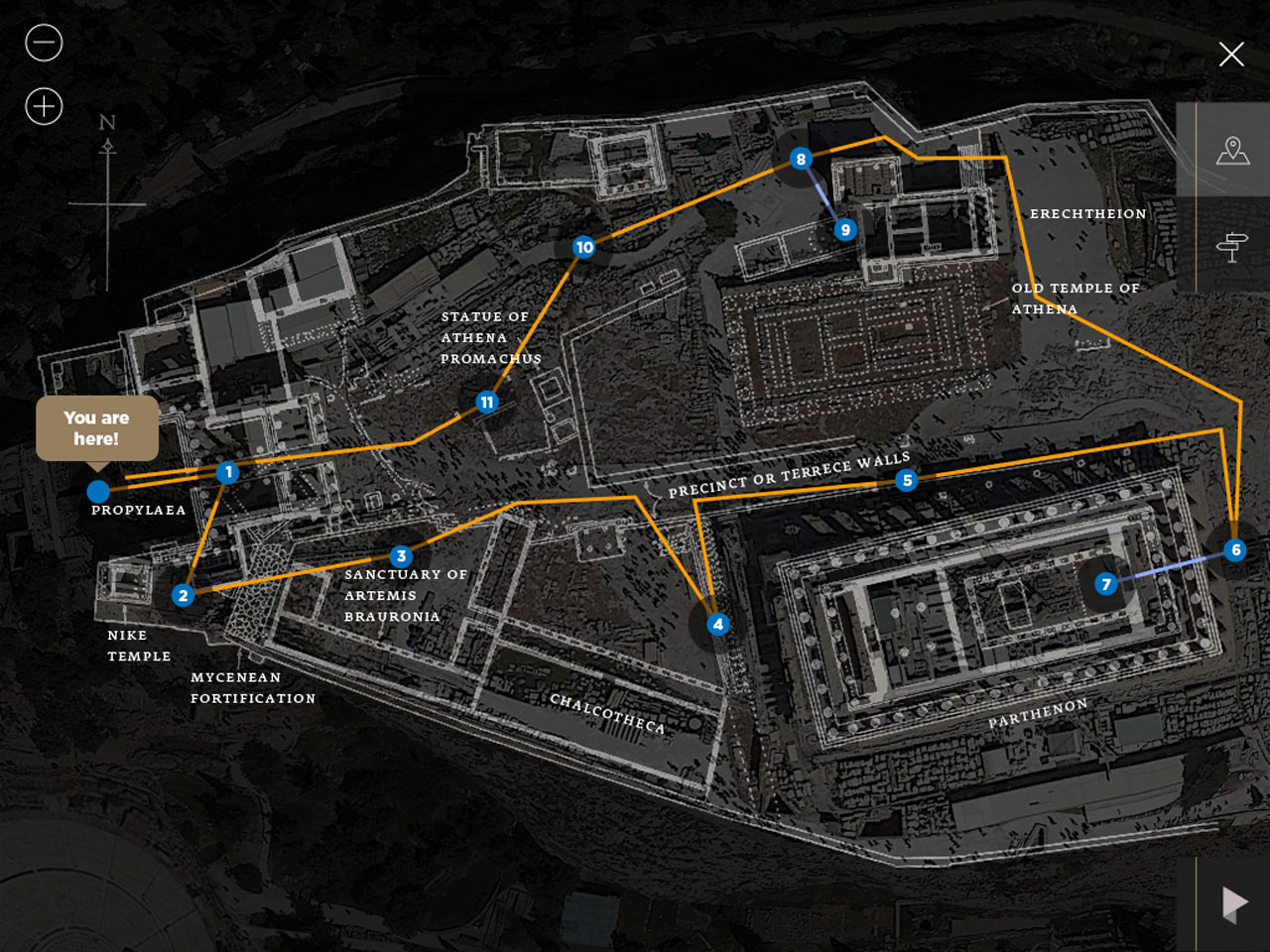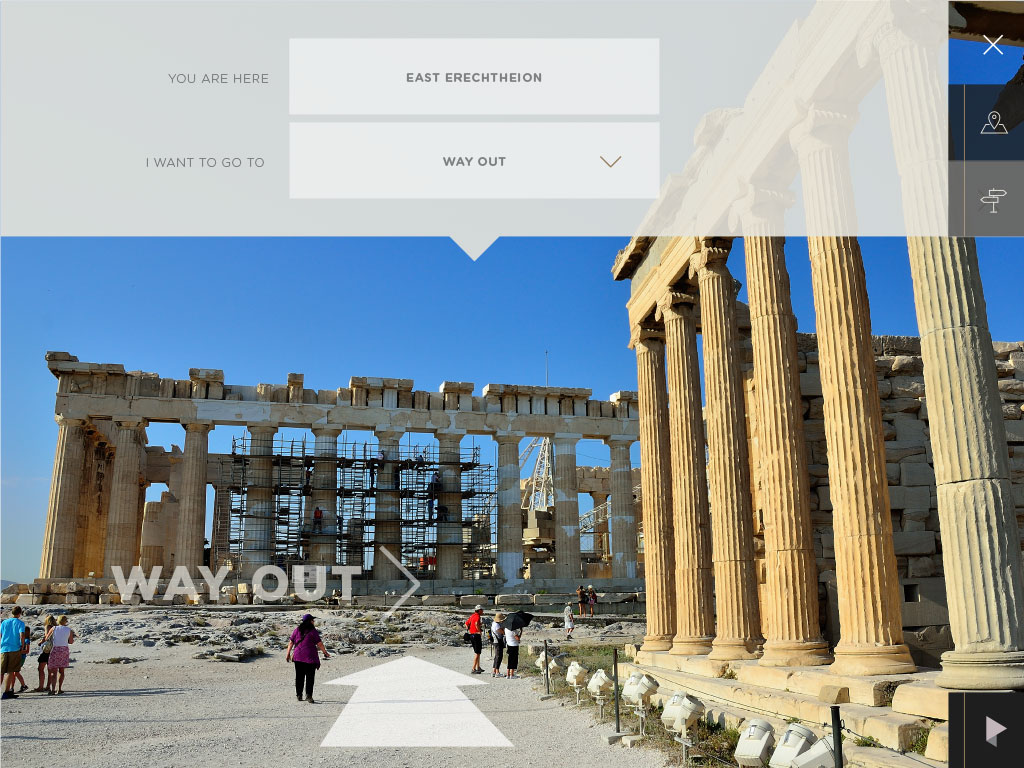Restory
Task
Design an innovative mobile application that uses mixed reality and personalised interactive narratives to make visitors become part of the monuments’ history and context
-
Strategy
Brand Strategy, UX Strategy
-
Design
Product Design, Art Direction
-
Sector
Cultural Sites
Intelligible storytelling,
design and creativity
ReSTORY Acropolis is an innovative mobile application that uses mixed reality and personalised interactive narratives to make visitors become part of the monuments’ history and its context.
The ReSTORY project proposes to enrich the archaeological, cultural, historical site or museum visits through personalised interactive storytelling experiences that become storyliving and (re)inject the sense of discovery and wonder in the visitor’s experience. It aims to inform, teach and entertain at the same time using engaging stories and immersive technologies that let you become part of the story and live the history.
The Athenian Sacred Rock
The Acropolis of Athens and its monuments are universal symbols of the classical spirit and civilisation and form the greatest architectural and artistic complex bequeathed by Greek Antiquity to the world.

The Experience Now
Impressive at first sight, but also confusing and difficult to comprehend as a whole. The remains of the Parthenon temple only give you an idea of its former glory.
Most of the elaborate details of the original building are on display in the New Acropolis Museum, Athens or the British Museum in London.

Make everyone’s visit an adventure.
Imagine now seeing a full recreation of the original Parthenon Temple with all the impressive details at the actual location, where it was built 2500 years ago. When users activate the video, figures of temple maids appear on the AR view of the real environment. The ritual starts and users view the see-through video made with post-production techniques. Actors in period costumes recite hymns in ancient Greek language with subtitles.
Immersive technologies provide the opportunity to create narrative – driven cultural “adventures”. Available at a particular place and time, they turn any tablet into a window to the past.
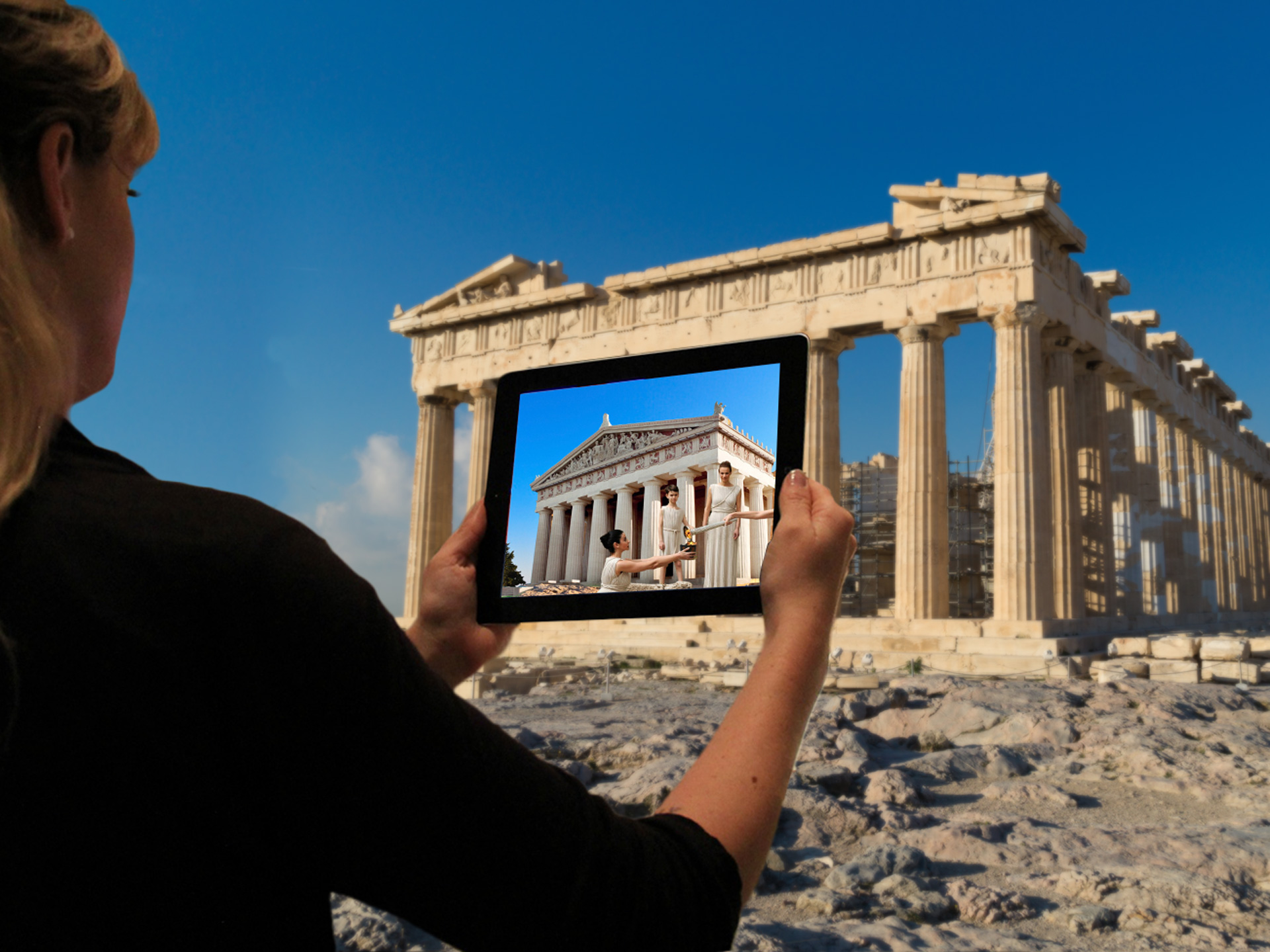
The Visitor
ReStory focuses on enriching the visitor experience, enabling a better understanding of the cultural heritage and offering an enjoyable visit. Visitors play an active role in this journey through history, enriched with simulations, short films, pictures, audio and games.

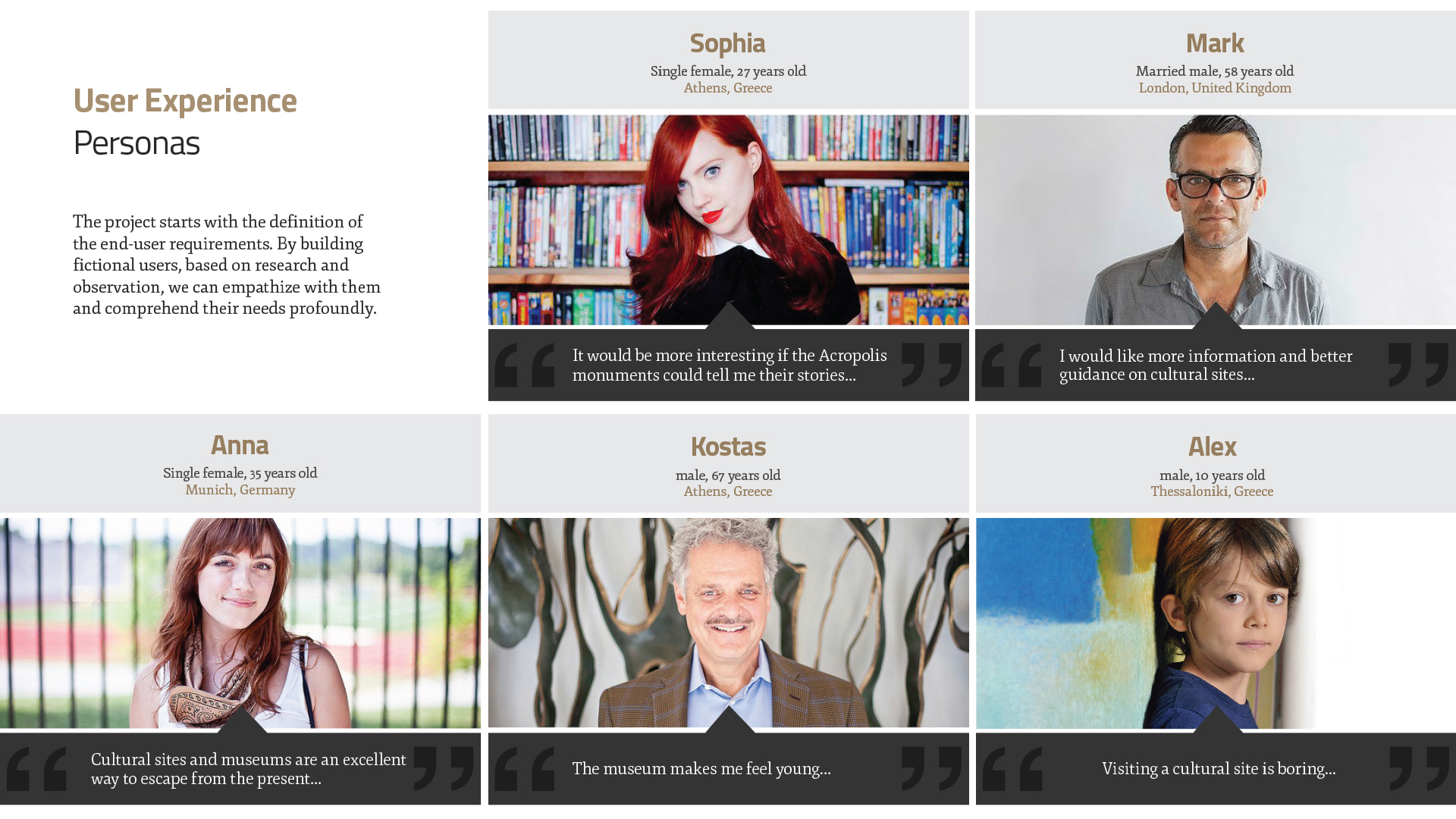
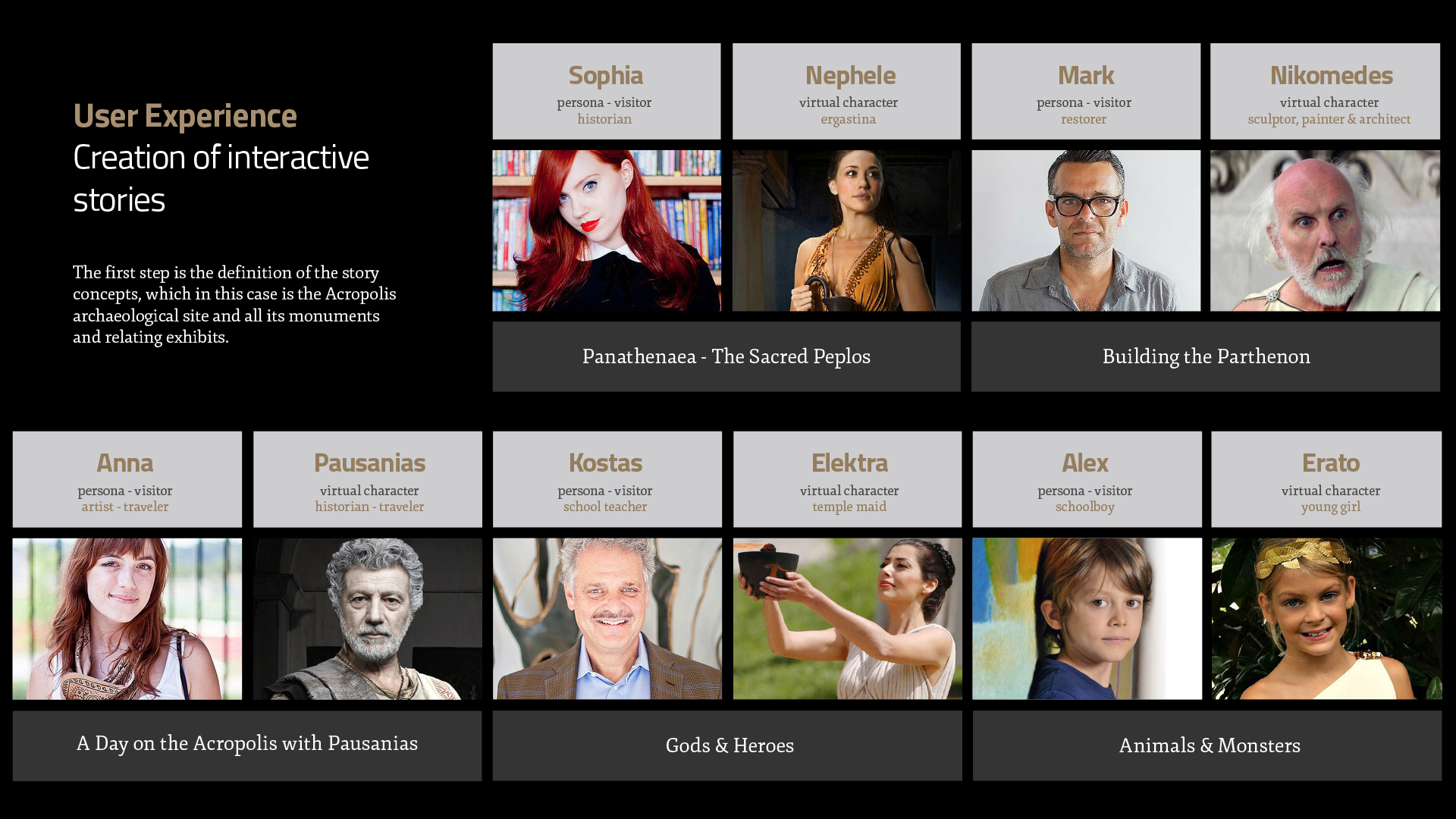
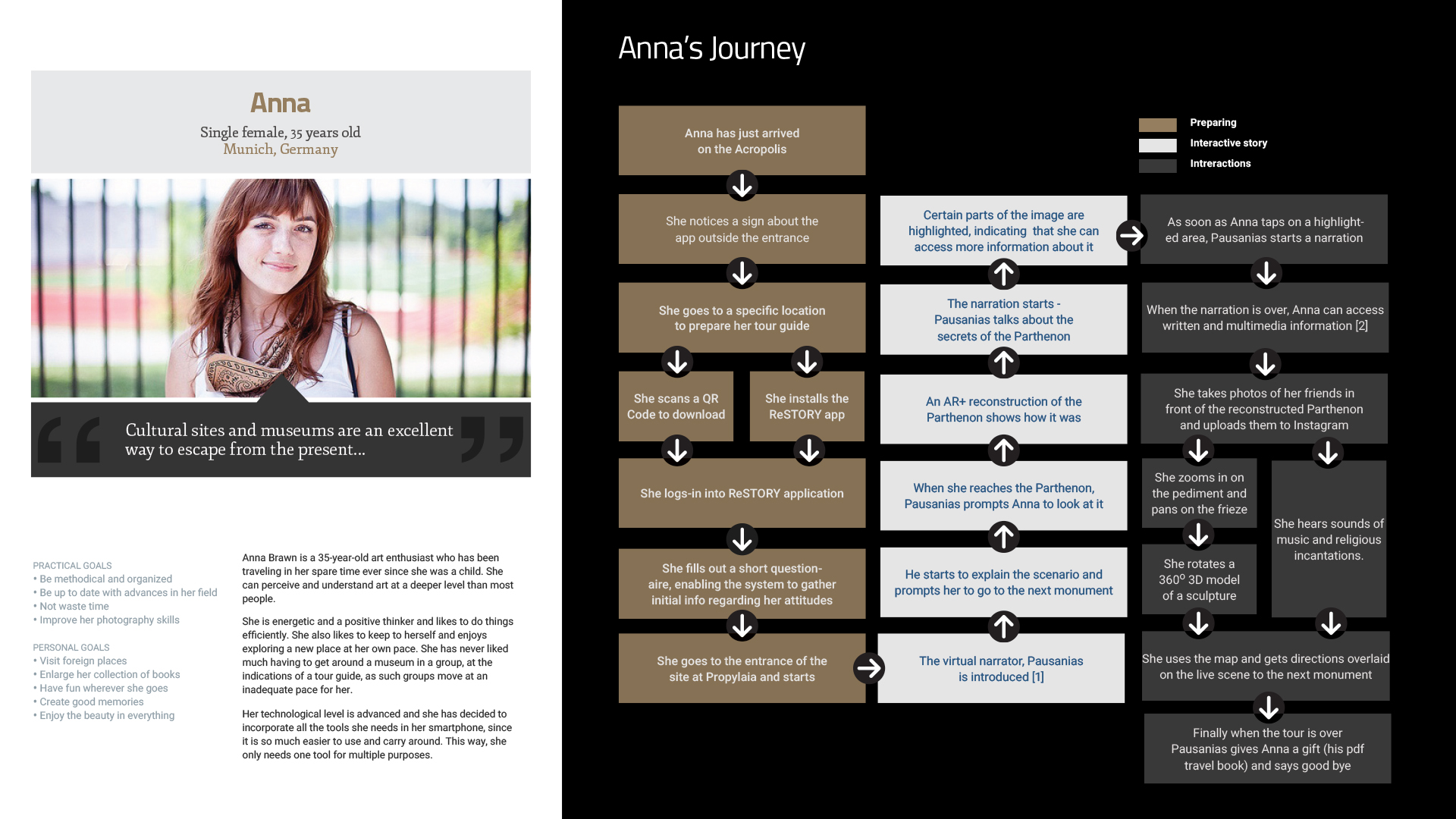

Good design is “invisible”.
The main principle of the ReStory app is that good design is “invisible”. The use of subtle and often undefinable micro and macro elements make a purposeful, simple design without distracting from the story.
The Introduction
The first screen is a motion effect of the reconstructed Acropolis revealed above the original image.
In the Propylaea, at the entrance of the Acropolis, Pausanias, a virtual character (actor), introduces himself and explains the upcoming experience. He is one of the characters of various stories, unfolding the story’s plot while prompting the visitor to take specific actions within the site space. Users can look at videos through their tablet’s camera and see them overlaid on to the live street scene.
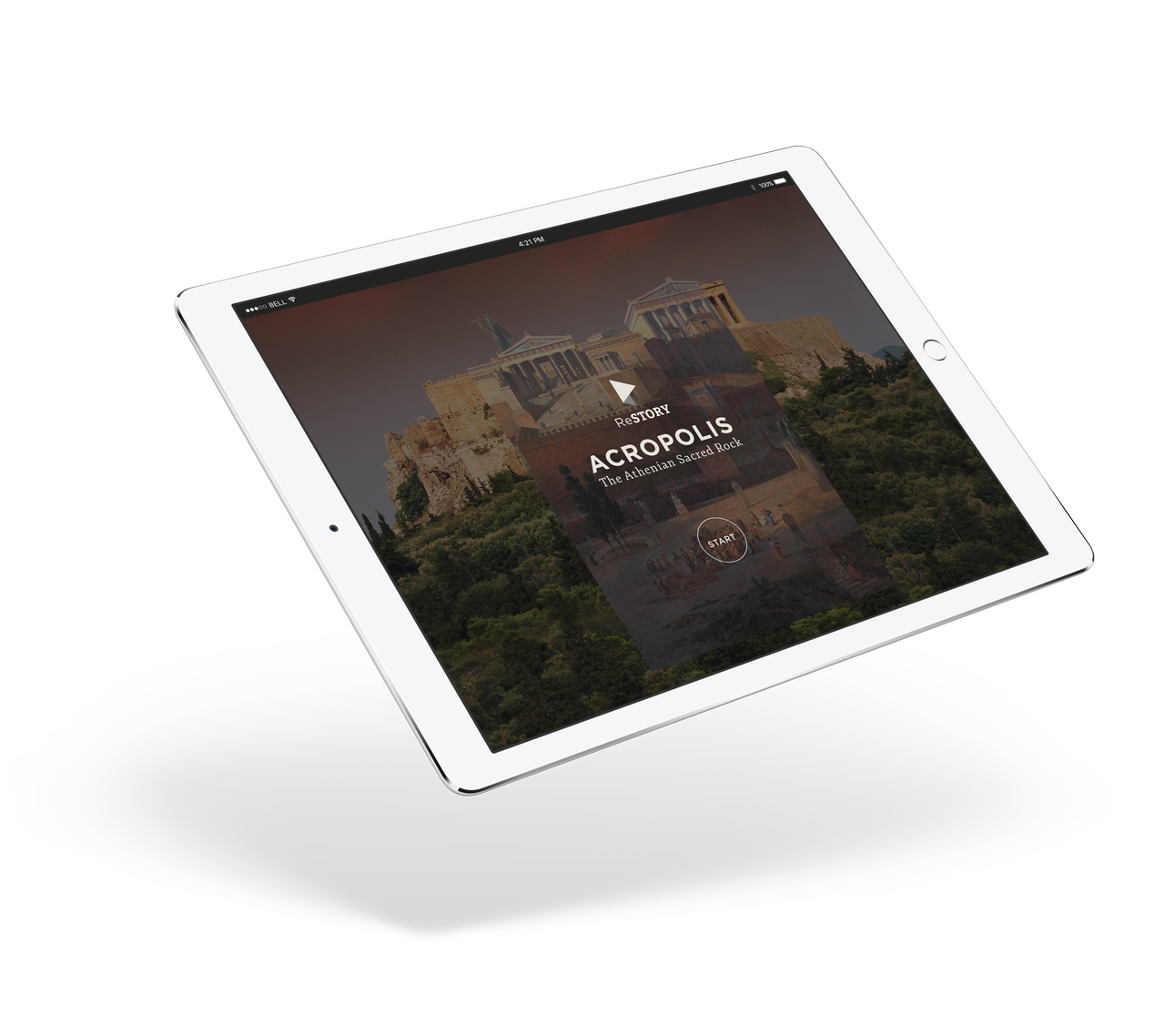
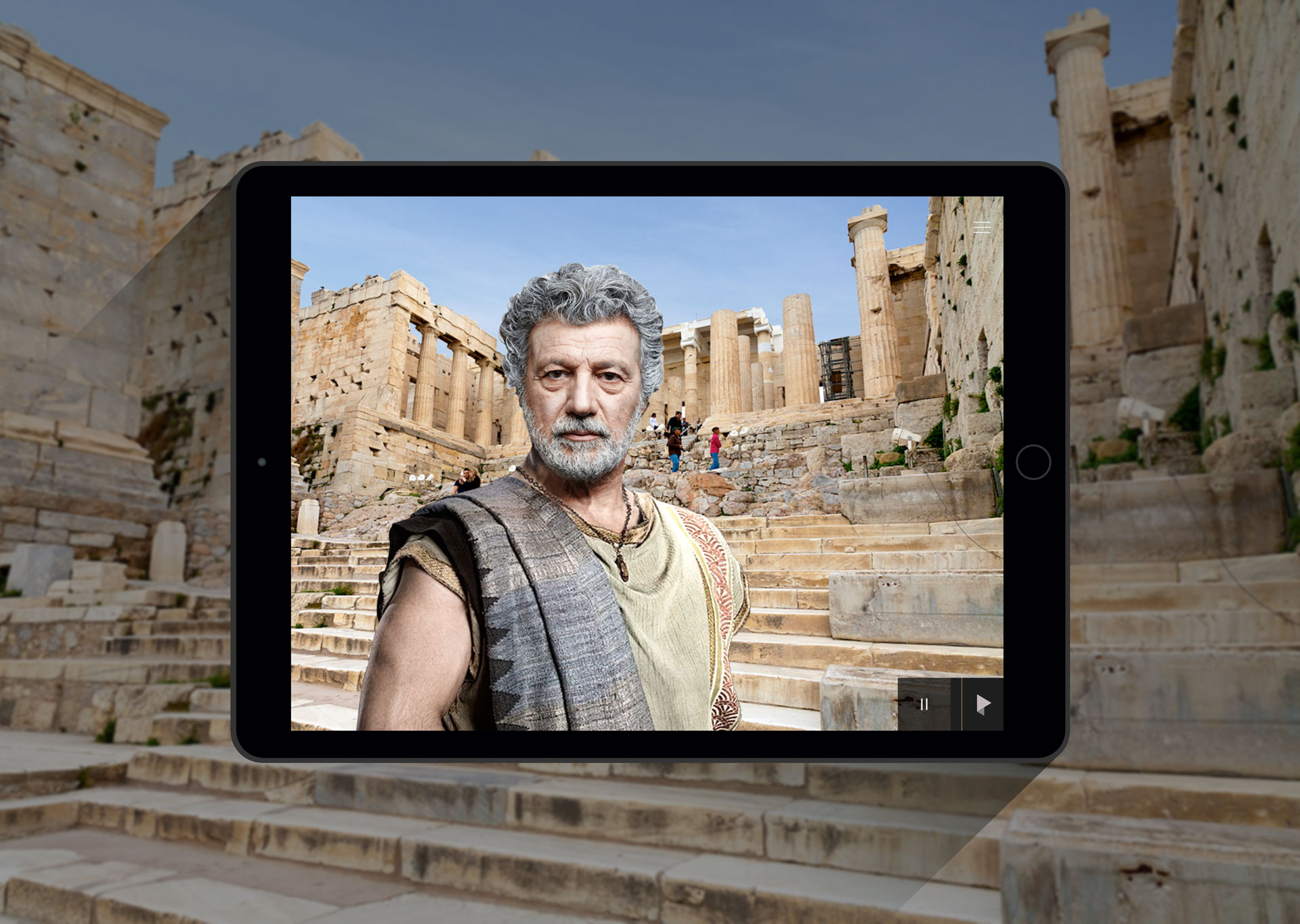
The Library
This is the second level of the interactive experience. It is more instructive and has “index” style. The purpose of the library screen is that a large part of the interactive content can also be accessed later when users are not anymore on the archaeological site.

The AR
The AR app shows an image of the Parthenon as it originally looked overlaying the live scene. When the user taps the play button at the bottom right corner of the screen Pausanias starts narrating about the secrets of the Parthenon.
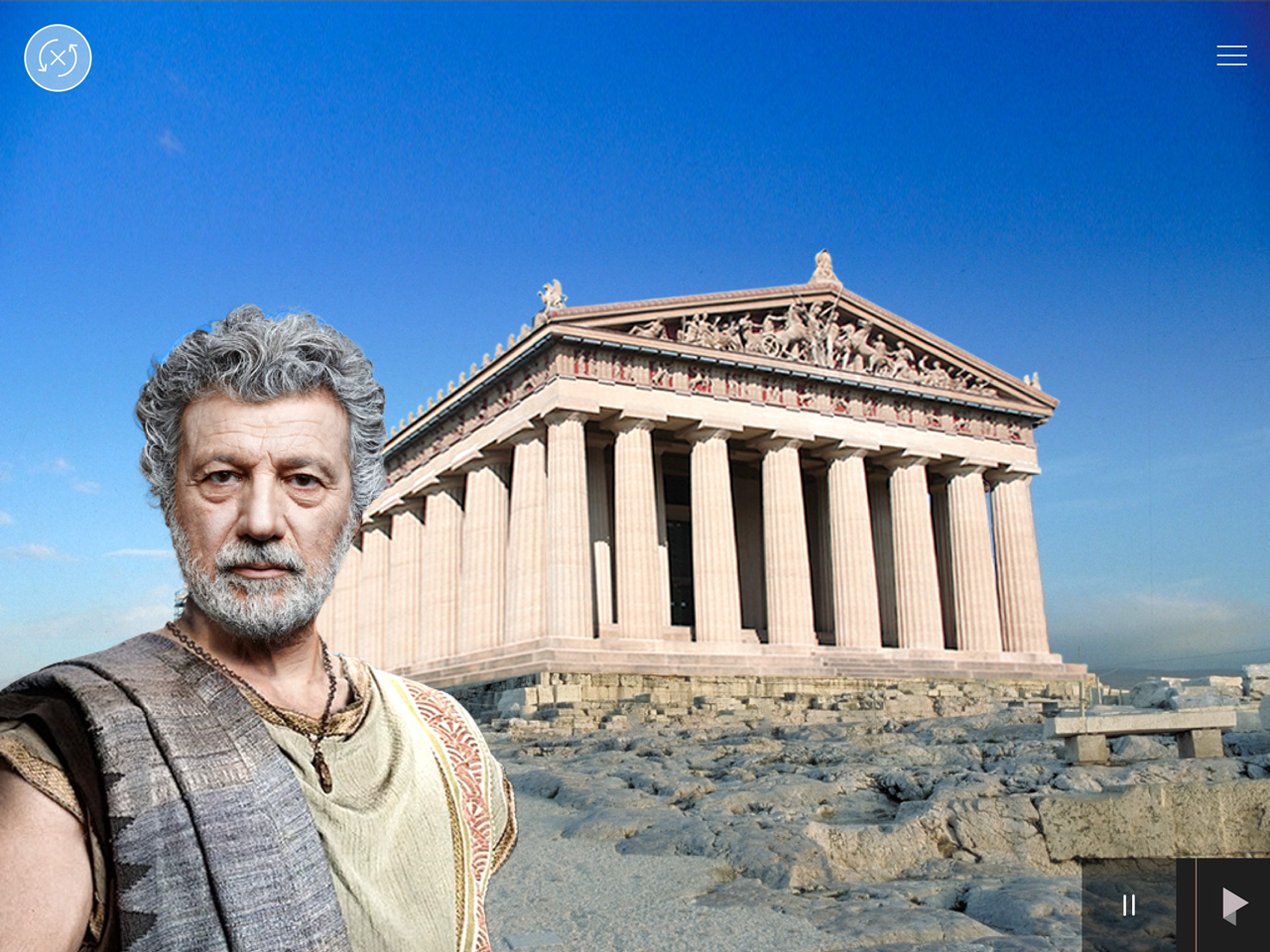
The AR+
On certain AR views a “plus” icon appears at the top left corner. When activated, floating info-spots stringed to specific parts of the monument are revealed. By tapping the info-spot the specific element is labelled with its name and an icon indicates further interactive content is available, such as video, audio-narration or interactive showcases.

The Showcase
The user can tap parts of the frieze at any time and highlight a specific block to display written or audio information. From a submenu, users, for example, can choose to see the frieze in full technicolour glory, as the ancient Athenians would have; they can swipe on parts of the block and see the frieze in colour as well as listen to audio commentaries from a range of historians.
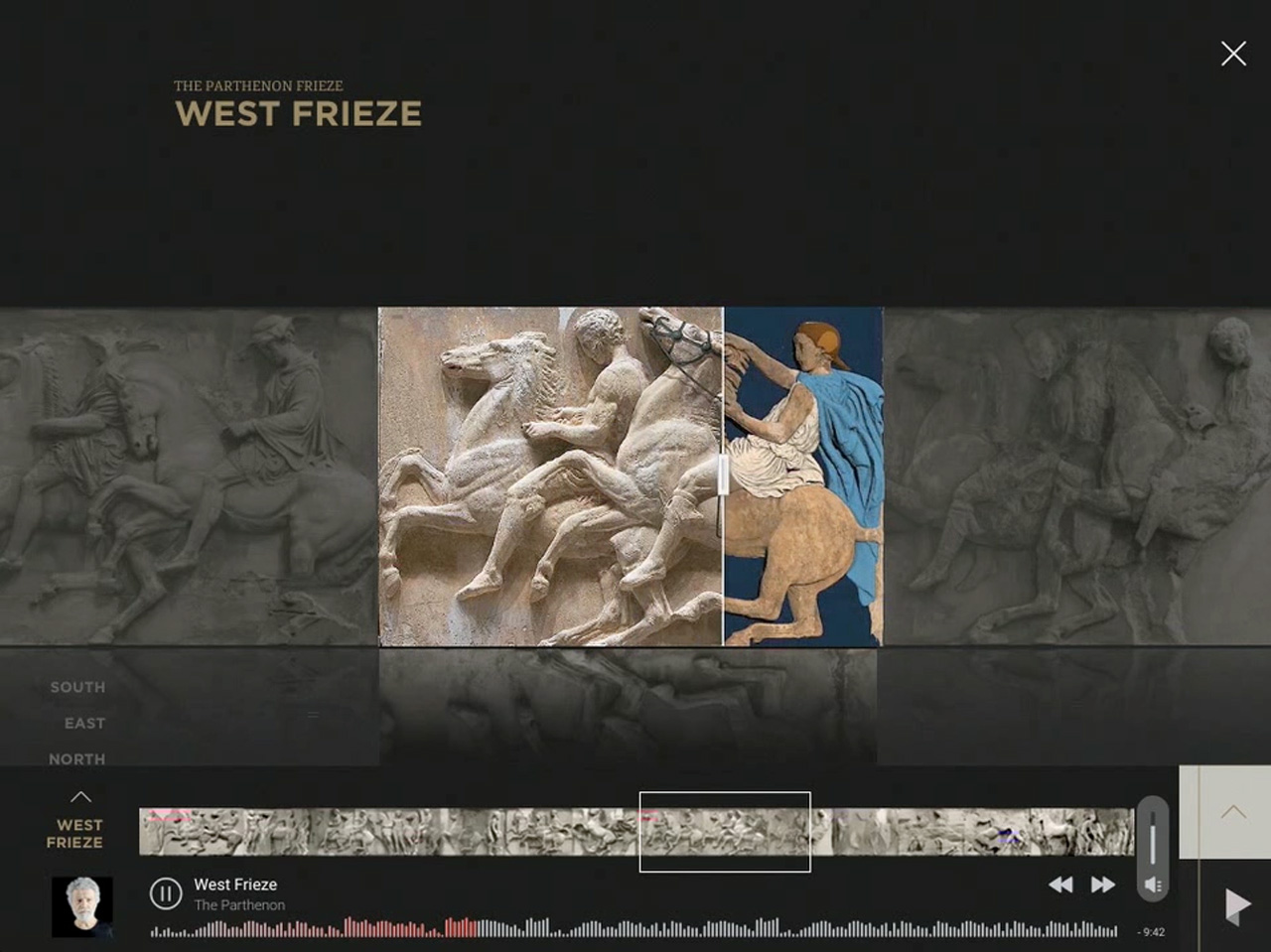
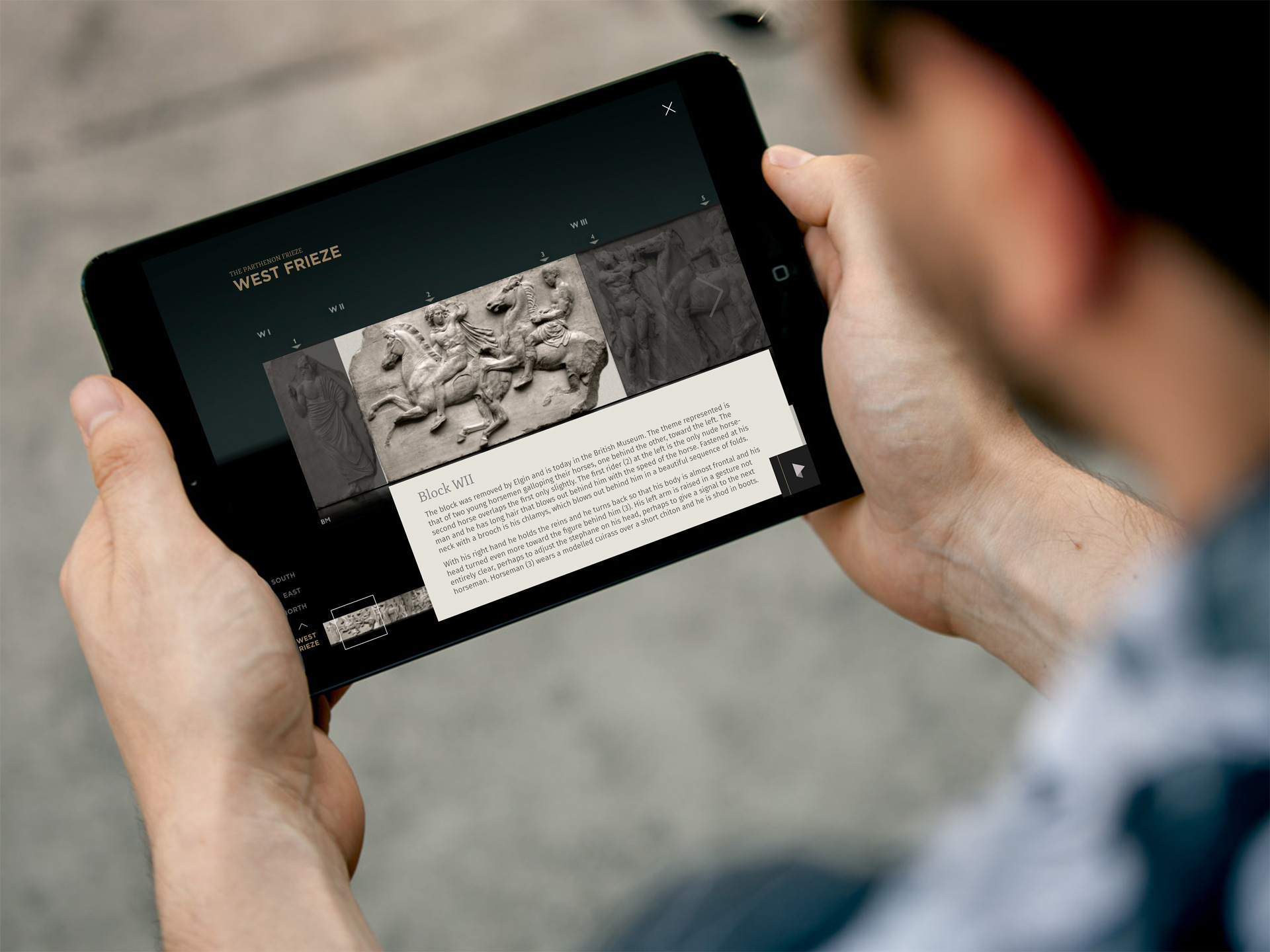
The Stories
Historical (virtual) characters share their insights and shed light on what life was like on the ancient Acropolis of Athens or at a later point in time. The stories include: people, wealth and status, culture, religion and beliefs, architecture and sculptures, restoration, the past and the present.
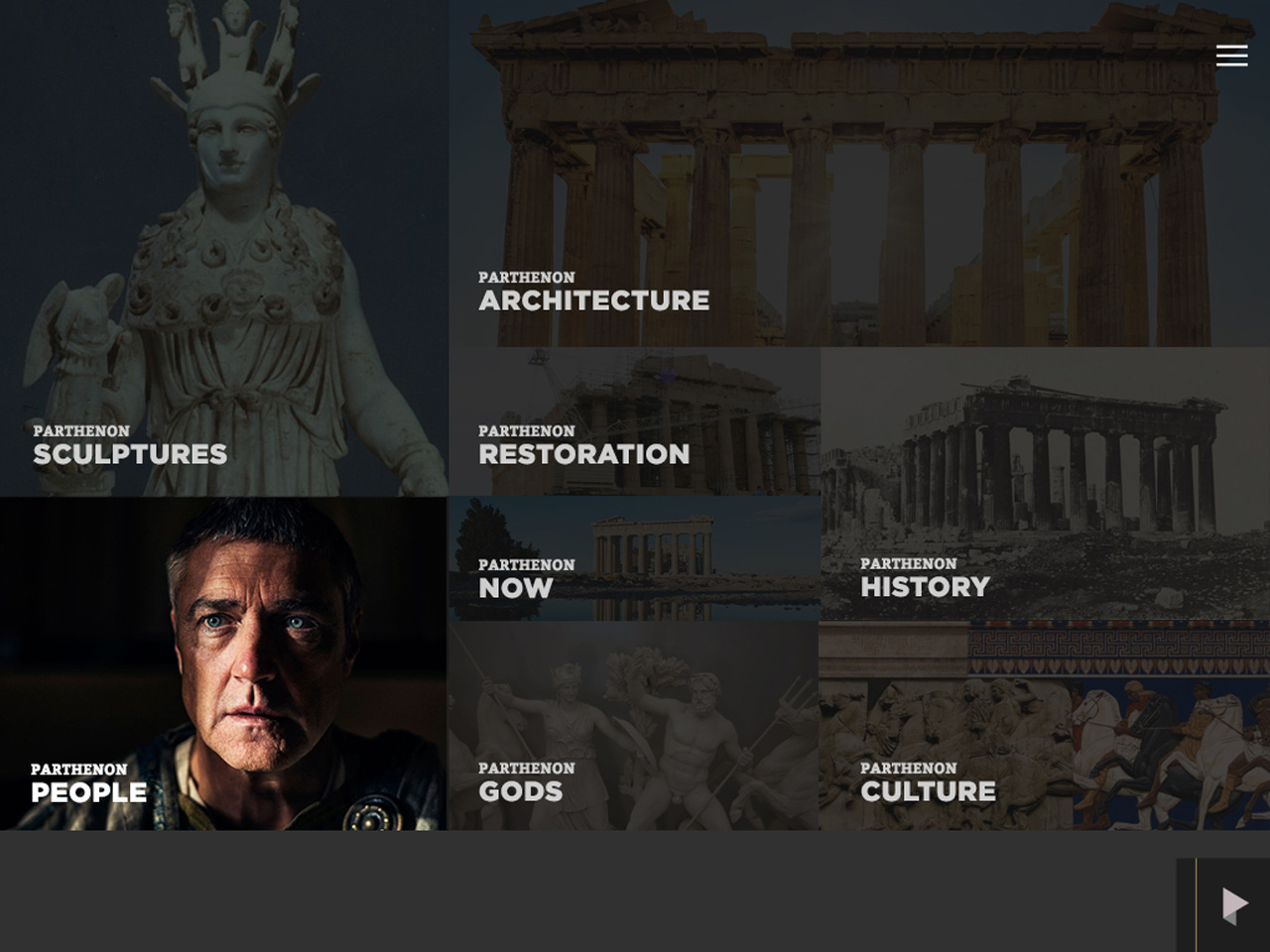
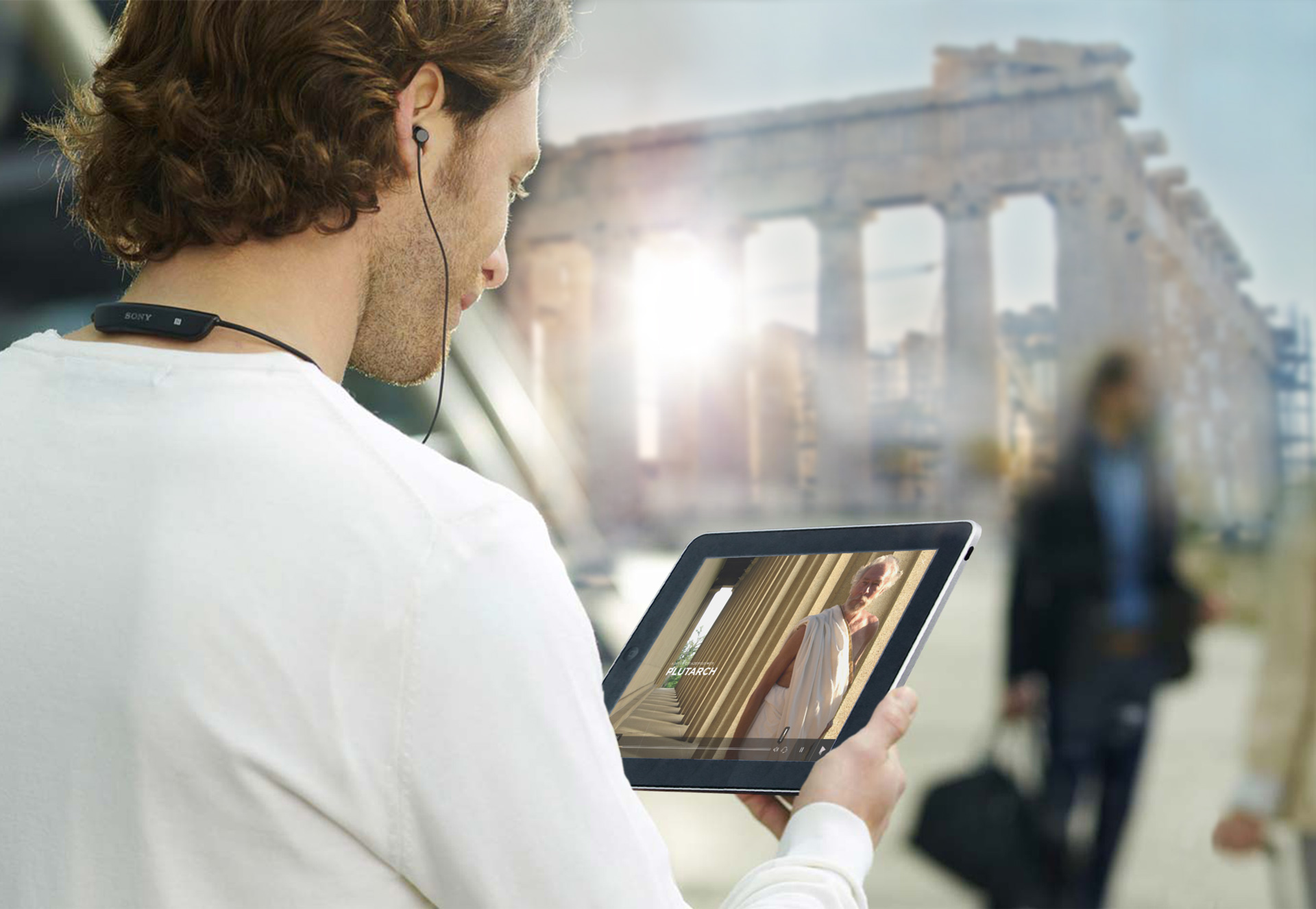
The Timeline
A slidable timeline takes the user to major events relevant to the Parthenon. When he slides, for example, to the date 447 BC, a video thumbnail appears. He has the option to tap and play the event or ignore it and move the circles to another major event.
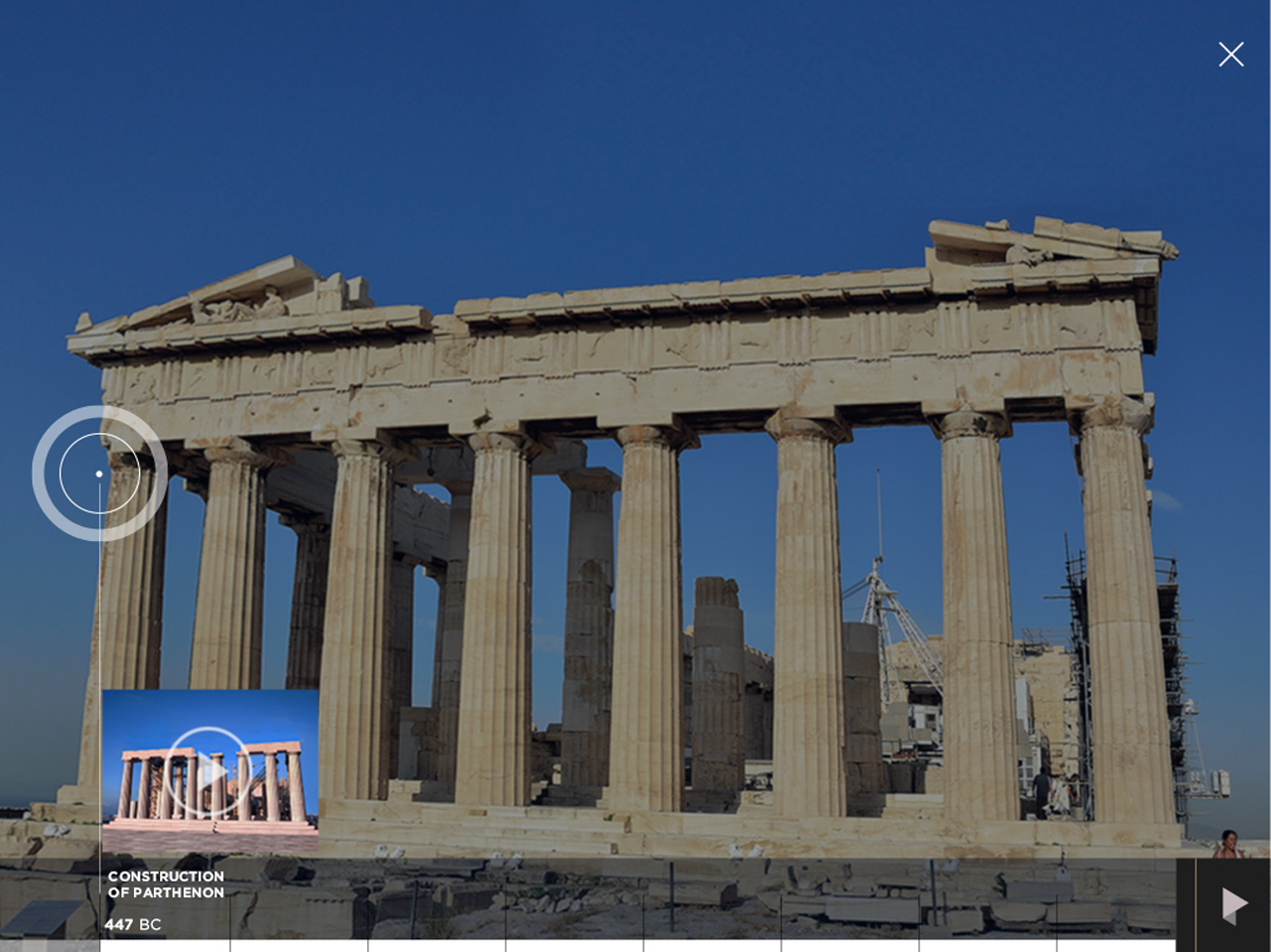
The Mixed Reality
As the visitor moves with his device, the view of the digital temple on his screen changes following his movements. When users activate the video, figures of temple maids appear on the AR view of the real environment. The ritual starts and users view the see-through video made with post-production techniques. Actors in period costumes recite hymns in ancient Greek language with subtitles. Users can hear music and the sound of religious incantations.
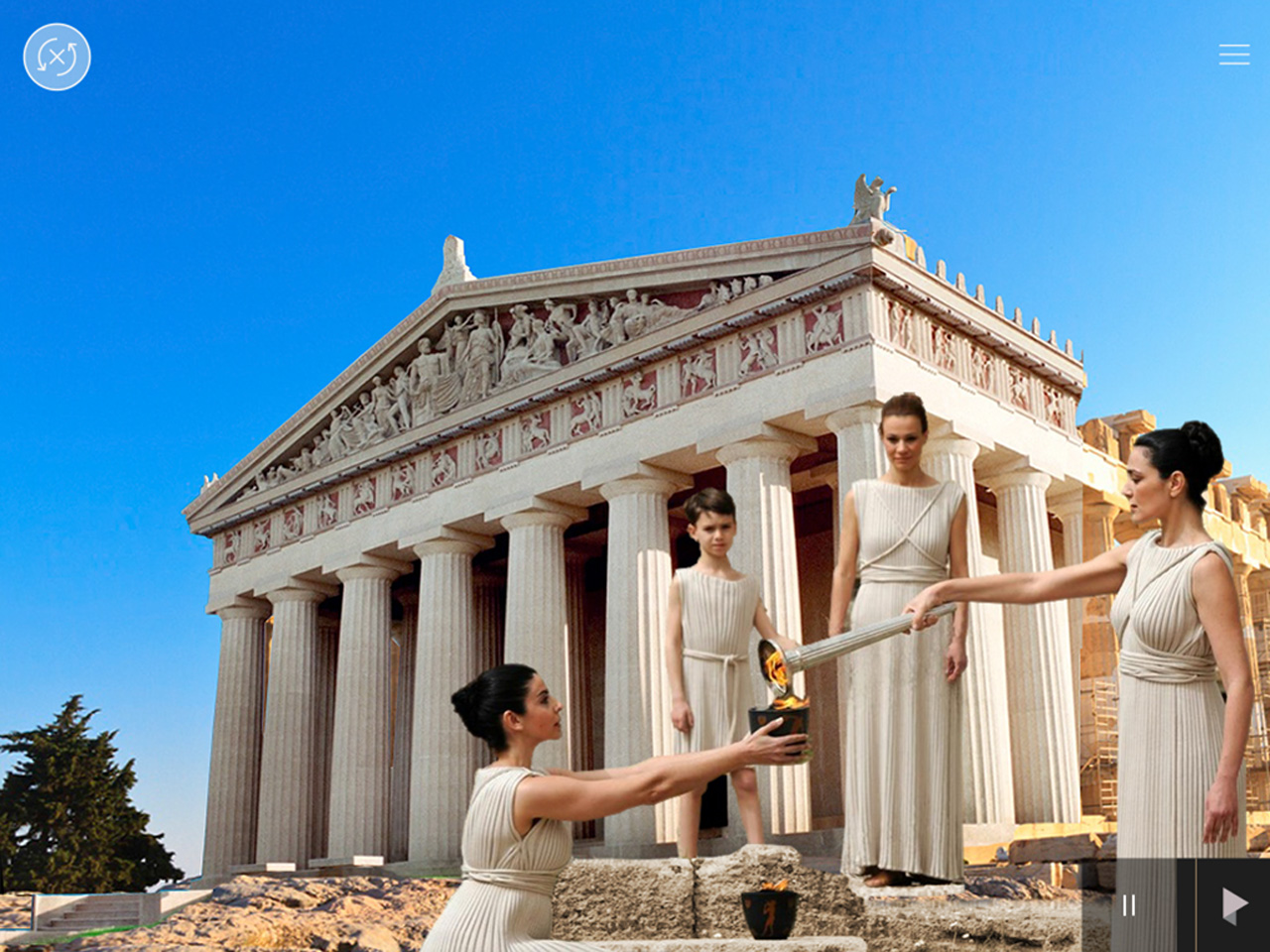

The Virtual Entry
When the user taps the “VE” icon, a 3D motion animation starts to play and lets the visitor virtually step inside the Parthenon to explore the interior. When the user taps the plus button, info-spots indicating further information and actions are displayed. The user now, for example, can listen to the narration of Pausanias. Also, he can control the panoramic view of the temple’s interior by holding his finger on the “360” icon and moving it on the screen or by tilting the tablet.

"StoryLiving".
A parallel world opens where reality and fiction melt in a mysterious and intriguing way – creating a ‘physical cinema’. The visitors watch things unfold on their screen but feel the presence of those events deeply as they are in the exact location where the events of the “movie” took place.
ReSTORY makes everyone’s visit an adventure.



